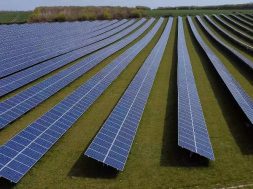
High-efficiency ‘step cell’ to harvest sunlight
In a collaborative project, researchers from the Massachusetts Institute of Technology (MIT) in the US and the Masdar Institute of Science in Abu Dhabi claim to have found a way to develop very high-efficiency solar cells at low cost.
The new photovoltaic (PV) cell harvests more of Sun’s energy, converting it into usable electrical energy at very low costs, the teams reported in the Journal of Applied Physics and the IEEE Journal of Photovoltaics.
On an average, solar panels made from traditional silicon-based solar cells convert only between 15 and 20 per cent of the sun’s energy into usable electricity.
The low efficiency is partially due to a property of silicon which prevents the semiconductor from efficiently converting the high energy blue, green and yellow light waves into electrical energy. Instead, only the lower-energy photons, emitted by the longer red light waves, are efficiently converted into electricity.
The new solar cell developed by the MIT-Masdar team combines two different layers of sunlight-absorbing material — a gallium arsenide phosphide (GaAsP) and silicon — to harvest a broader range of the energy from longer and shorter wavelengths of sunlight.
The researchers call the device a “step cell,” because the two layers of semiconductor materials are arranged in a stepwise fashion, on top of each other, with the lower silicon layer jutting out beneath the upper (GaAsP) layer.
This step design exposes both layers to incoming sunlight so that each can absorb a different slice of the electromagnetic spectrum, the researchers claim.
It allows the top GaAsP layer to absorb the high-energy photons (from blue, green, and yellow light) leaving the bottom silicon layer free to absorb lower-energy photons (from red light) not only transmitted through top layers but also from the entire visible light spectrum.
“Adding that one layer of GaAsP can really boost efficiency of the solar cell,” the researchers report. The team’s step-cell concept can reach theoretical efficiencies above 40 per cent and the product might be ready for the PV market within the next year or two, it is claimed.
Such layered solar cells are typically expensive to manufacture, but the researchers brought down the manufacturing cost by using a process that allows the “substrate,” a key component in fabrication of the step cell, to be reused.















